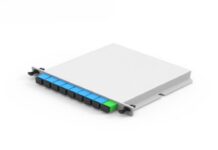Designing a PCB layout is a basic yet very important job for design engineers. PCB routing or wiring is a major activity because the quality of wiring directly influences the board’s functionality. Routing is done in three different ways; serpentine wiring, right-angle wiring, and differential wiring. For this process to succeed, the PCB layout must be well done. It should be lightweight, compact, reliable, and efficient for any other activity done on it or components placed on it. Before you successfully wire the Printed Circuit Board, designing must take place. In this extract, we discuss the PCB layout design process.
How to Design a PCB Layout
The role of the PCB is significant since it’s the base for all components. Its development is crucial and is done in six steps. They are;
1. Concept identification
Knowing why you want a certain process to happen is key even before it begins. In this case, identify why the PCB is necessary then develop a concept. You should point out the functions, qualities, and connectivity of the PCB to other circuits and devices within your concept. The design idea helps the engineer approximate the board’s dimensions and size and fit on the finished product. Also, he determines the maximum temperature range and setting of the PCB based on your intended application. Knowing this is crucial since Printed Circuit Boards are used in varying environments with different temperatures. It ensures they function as desired and in the correct manner.
2. Schematic drawing
The step involves drawing a diagram of the circuit based on the concept idea in the first stage. The designer draws the exact item but on a smaller scale and incorporates all names, values, and ratings of every component and how they will function on the board. Schematic drawing helps to identify the total cost of materials needed. This is because slots are made for all components, making it easier to know the number and the amount of money required. Despite drawing the diagram, the design or documents are switched in case there’s a change.
3. Board-level block drawing
At this stage, the electronic engineer draws the PCB to scale. The board is usually in its exact size and measurements with divided sections for each component. A mark is then put inside each section to show the exact position of each block. Various components function differently; thus, they are grouped according to their similarities and connectivity. Doing this makes tracing easy and short.
4. Component placement
After marking out the block positions, the designer determines the position of every component within the block. However, immediate placement is not done since the possibility of changing the design or refining is high. So, placement only happens when the designer is satisfied with his position selection.
5. Routing
Routing or wiring can only take place after all components are positioned. This stage requires you to follow the integrated circuit design rules for the PCB to function well. Wires are fixed to connect them, creating a complete circuit for current to flow.
6. Testing of the PCB
Manufactured products are always tested before they are declared viable and safe for use. Multiple tests are done on the PCB, and if it meets all the requirements, the process is successful. If not, several changes are done to make it ideal. Product testing is the final step of the PCB layout design process.
Bottom line
A good PCB layout ensures the proper placing of components and routing. When the wiring is good, the likelihood of signal problems and other electrical issues is minimal. The design process is straightforward and helps you understand what takes place during manufacturing if you involve an electrical engineer.







